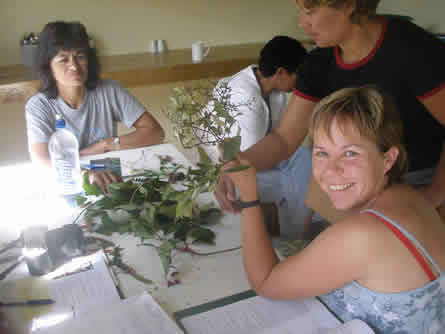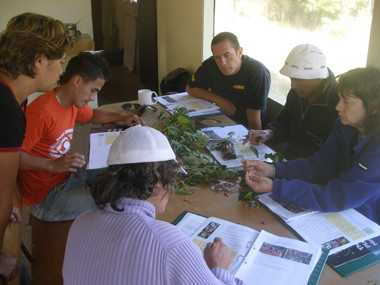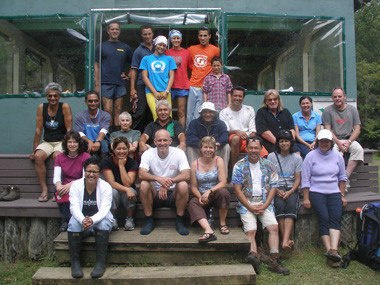 The Network delivered its first marae-based plant training course in Northland in February and March of 2006. Hosted by Ngati Hine, the two day course piloted a national programme being implemented by the Network to enhance knowledge among iwi of New Zealand’s extraordinary and unique native plant life. This fits with the Network’s implementation of Target 15 of the Global Strategy for Plant Conservation.
The Network delivered its first marae-based plant training course in Northland in February and March of 2006. Hosted by Ngati Hine, the two day course piloted a national programme being implemented by the Network to enhance knowledge among iwi of New Zealand’s extraordinary and unique native plant life. This fits with the Network’s implementation of Target 15 of the Global Strategy for Plant Conservation.
 Developed by the Network with funding from the Biodiversity Condition and Advice Fund, the course is the first of its kind. The training module - “Introduction to plant life in New Zealand” was developed for the Network by NorthTec which has considerable experience in delivering training programmes in the region.
Developed by the Network with funding from the Biodiversity Condition and Advice Fund, the course is the first of its kind. The training module - “Introduction to plant life in New Zealand” was developed for the Network by NorthTec which has considerable experience in delivering training programmes in the region.
 Over 25 students from all over Northland attended the course, held at a bush camp on the property of Kevin Prime near Motatau. The course was led by tutors from Northland Polytechnic including Iain Reid, Jamie Hancox and Olly Ball.
Over 25 students from all over Northland attended the course, held at a bush camp on the property of Kevin Prime near Motatau. The course was led by tutors from Northland Polytechnic including Iain Reid, Jamie Hancox and Olly Ball.
Five Network tutors also assisted the students. They were: Barbara Mitcalfe (Wellington Botanical Society), Janeen Collings (Department of Conservation), Lisa Forester (Northland Regional Council), Philippa Crisp (Greater Wellington) and John Sawyer (Department of Conservation). Tutors taught students how to describe leaves, flowers, bark and fruit and how to recognise and identify native plants. This was done through hands on teaching and bush walks to meet Northlands plants face-to-face. Students were introduced to a range of local native plants such as taraire, totara, makamaka and towai. They were also given the opportunity to stand up and talk about these native plants and teach each other what they had found out about their chosen plants.
A work book on basic botany and plant identification was developed for the student to accompany the course. A follow up course in March re-enforced what was learnt at the first course and students received their certificates.
